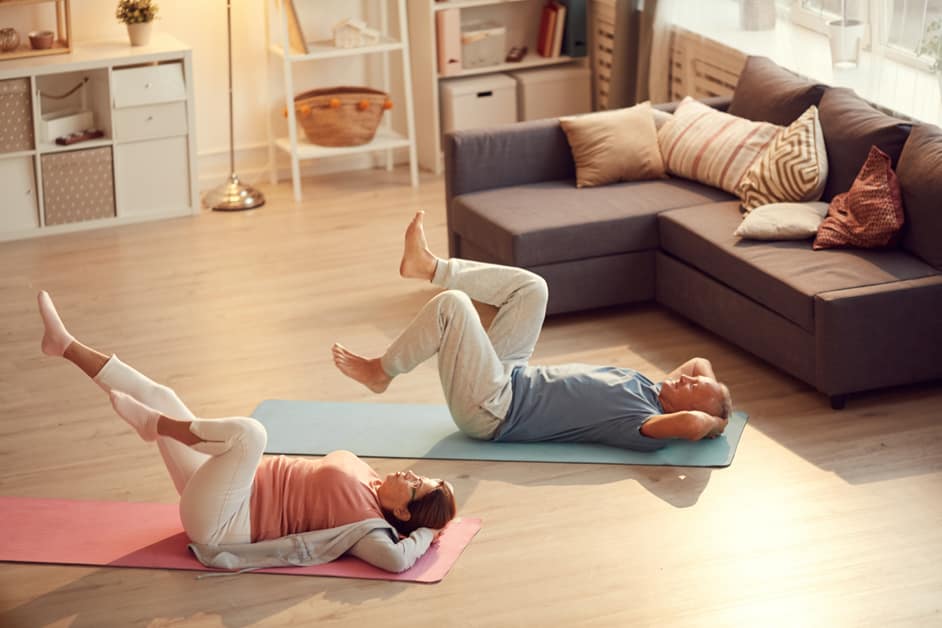Introduction
Exercising is a must for seniors to stay strong and stable as they age. Especially those with knee pain. Low-impact exercises such as walking, pool workouts, yoga, Pilates, and chair exercises reduce stress on joints. Resistance stretching with elastic bands or light weights helps strengthen knee muscles without harming the joint.
So, incorporate low-impact activities! They help maintain muscle strength and range of motion – with reduced strain. Here are some examples of exercises that can help improve knee strength in seniors with pain, so they can get back on their feet soon!
- Walking
- Pool workouts
- Yoga
- Pilates
- Chair exercises
- Resistance stretching with elastic bands or light weights
Benefits of Low-Impact Exercises for Seniors with Knee Pain
Low-impact exercises are great for seniors with knee pain. They give many benefits to help joint function and reduce discomfort.
- Good blood flow is provided to the joints, getting oxygen and essential nutrients. This strengthens muscles and tendons around delicate knees, improving walking and stairs without pain.
- Low-impact exercises stretch surrounding tendons and ligaments. This helps the knees become stronger in motion. Plus, core strength is improved, balancing your body weight and avoiding injury.
These exercises also bring physical health benefits. Combining cardiovascular and resistance exercises, you can get long-term improvements in strength and endurance. You can also improve your cardio, safely and with minimal strain on sensitive joints!
Types of Low-Impact Exercises
Seniors with knee pain can stay active without aggravating it through low-impact exercises! Swimming, cycling and walking are all great options. This article will show you the different types of low-impact exercises and their benefits. Come learn more!
Walking
Walking is a great exercise for seniors who experience knee pain. All you need are comfortable shoes with proper foot and ankle support. You can customize your workout to build endurance, strength, speed, and agility.
Power walking involves taking purposeful strides and engaging the arms. This helps heal parts of the legs affected by knee discomfort. Slow, heel-to-toe walks put less stress on feet, ankles, knees and hips, while still providing a boost to your cardiovascular health.
Once your endurance increases, you can increase the length and intensity of your walk. This will improve your mobility and fitness quickly!
Swimming
Swimming is an amazing low-impact exercise for seniors with knee pain. It’s great for muscle strength, flexibility and cardio! Many discover it helps reduce the intensity of their knee pain too.
Buoyancy supports and guards joints, even for those with chronic knee problems or arthritis. Low-impact moves are gentle on sensitive knees. Swimming also helps with balance issues as it uses alternating muscles in varying directions.
Shoulder-level devices and shallower pools may help those just starting out. As you get stronger, try different strokes or increase speed for extra challenge. Swimming might even be rehab: therapists often recommend exercises in water and on land. It allows pain-free movement and provides therapeutic and strengthening benefits.
Yoga
Yoga is the perfect exercise for seniors with knee pain. It’s gentle and controlled, building strength, balance, and flexibility – plus it’s calming! You can find special yoga classes for seniors at fitness centers and community centers.
Yoga poses open up the knees – they can move through their full range of motion, safely. This helps with joint flexibility and eases knee pain.
For those with limited mobility, there are modifications. Standing poses can be done with a support or chair. Those with knee pain can use a harder mat, or a pillow or cushion for comfort.
It’s important to do yoga properly to avoid hurting the knees. It’s best to consult an experienced instructor before starting a routine at home.
Pilates
Pilates is a gentle form of exercise for all ages, including seniors with knee pain. It helps stretch and strengthen muscles, allowing full movement with no strain on the joints. Pilates increases strength and flexibility in the body. This is key for protecting the knees from more harm.
It can be done on the floor or in a chair. It uses breathing to build abdominal muscles, better posture and muscle control, and boost core stability and flexibility. Seniors can practice Pilates anywhere they feel comfortable, even at home. Exercises are slow and stable, not fast or jerky. So, they are low impact and safe for those with joint issues. A certified instructor can help seniors make their workouts fit their body, and reach their fitness goals.
Tai Chi
Tai Chi is an old Chinese martial art. It consists of slow and gentle movements as well as postural exercises. It increases balance and strength in those who practice it. Also, it has been known to help ease joint pain in the elderly.
The intensity of the class can vary – you can do it while sitting or standing. For extra safety, it can be done in a swimming pool. This lowers the risk of injury and supports elderly people who wish to exercise. Studies have shown that tai chi helps reduce pain from osteoarthritis after practicing it for a few months. Hence, it is a great low-impact exercise for seniors with knee pain.
Safety Consideration
When exercising, safety is key – especially for seniors with knee pain. They should always start slow, use the right equipment, warm up and stretch. Before beginning any low-impact exercises, it’s a must to speak with a doctor or physical therapist.
When exercising, personal risks should be considered. Factors like age, medical conditions, and existing injuries can put seniors at higher risk of injury. Low-impact exercises lessen strain on weakened muscles, joints, and ligaments due to age or injury.
Seniors should be mindful when exercising. Listen to the body and adjust accordingly if needed.
- Less effort
- Modified moves
may be necessary to meet individual needs, while minimizing the risk of further injury.
Conclusion
Low-impact exercises are key for injury prevention and rehab. They protect joints and can help strengthen and rehab knees. Regular low-impact exercises can boost knee muscle strength, agility, balance, and mobility for seniors with knee pain. With a healthy lifestyle and diet, plus sleep and hydration, low-impact exercises are great for seniors’ overall health.
Before starting, check with your doctor or health care provider. They can make an exercise plan that works for you, depending on age, condition, and fitness level. Low-impact exercises may not fix knee pain right away, but with patience and dedication, they can help joint mobility and boost quality of life for seniors with chronic knee issues.
Frequently Asked Questions
Q: What are the best low-impact exercises for seniors with knee pain?
A: Low-impact exercises such as swimming, water aerobics, biking, and walking are great for seniors with knee pain. Yoga, Pilates, and tai chi are also good options as they are gentle on the joints.
Q: How often should seniors with knee pain exercise?
A: It is recommended that seniors with knee pain exercise at least three times a week, for a minimum of 30 minutes each session.
Q: What safety precautions should seniors with knee pain take?
A: Before beginning any exercise program, it is important for seniors with knee pain to consult with their doctor. Additionally, seniors should wear comfortable, supportive shoes and be sure to warm up and cool down before and after exercising.





